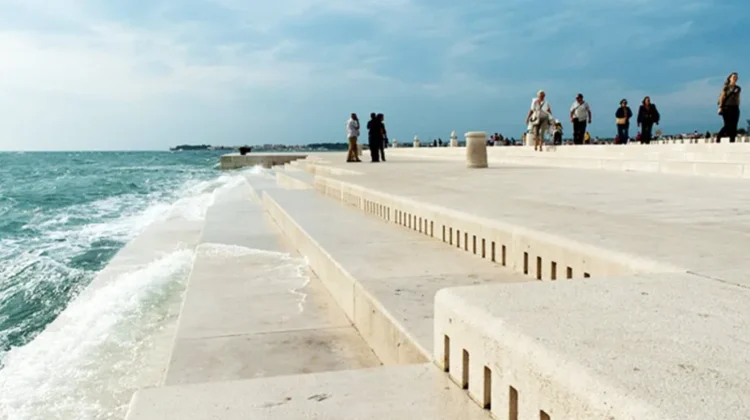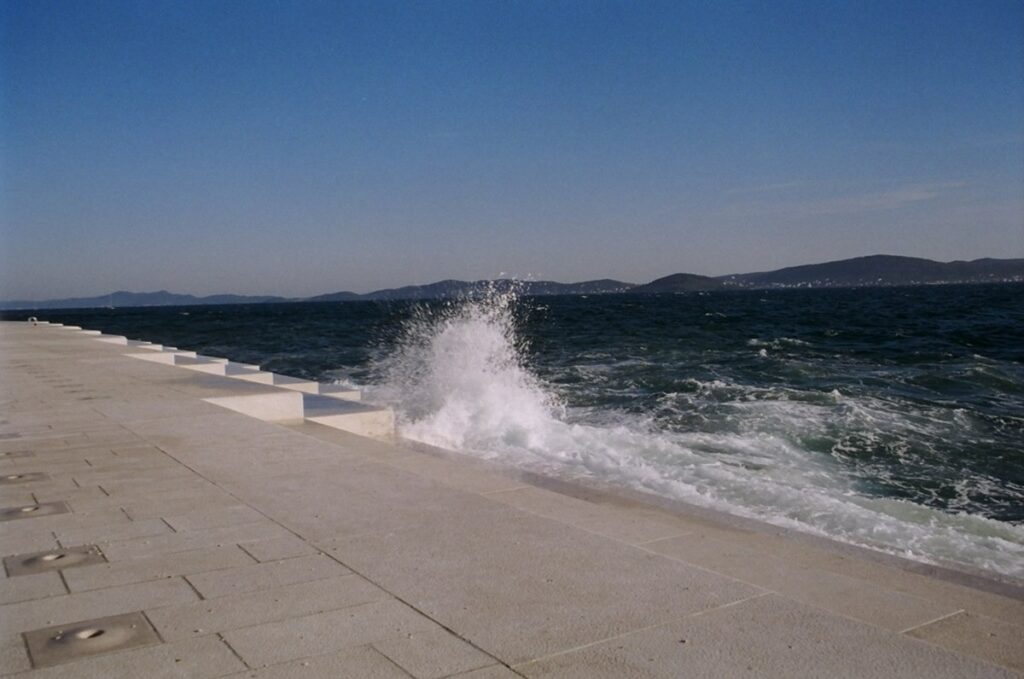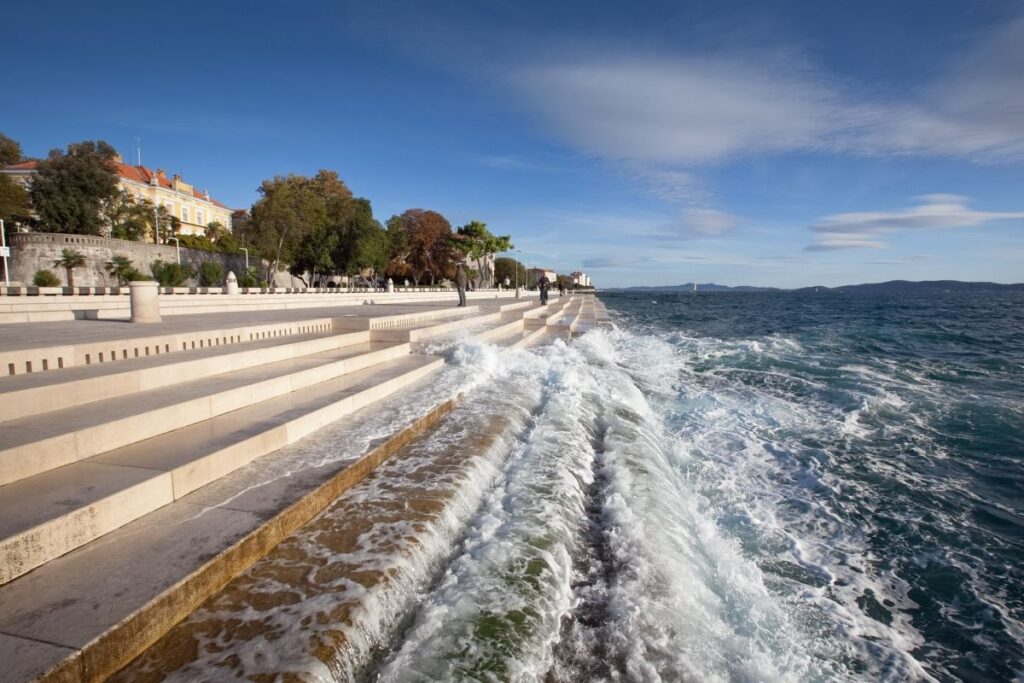
Nestled along the waterfront of Zadar, Croatia, lies a remarkable fusion of architecture and music known as the Sea Organ (‘Morske orgulje’ in Croatian). This unique installation, designed by architect Nikola Bašić, has been mesmerizing both visitors and locals since its inauguration on April 15, 2005.
At first glance, the Sea Organ appears to be a series of large marble steps leading down to the Adriatic Sea. However, hidden beneath these steps is an intricate system of polyethylene tubes and a resonating cavity that transforms the sea’s movements into haunting melodies.
The mechanism consists of 35 underwater pipes stretching across 70 meters (230 ft) of the coastline. As waves wash against the shore, they push air through these pipes, creating musical notes. The pipes vary in length, diameter, and slope, allowing for a diverse range of tones to be produced, as this video testifies.
The genius of the design lies in its ability to harness multiple natural forces. The breeze carries the waves, initiating the process, while each unique wave creates a different combination of sounds. Even the changing tides affect the intensity and frequency of the notes.
Acoustician and musician Ivica Stamac contributed to the musical aspect, composing seven sound clusters based on two major chords (G and C6) that alternate in steps. This composition was inspired by the traditional klapa singing of the region, rooting the Sea Organ’s voice in local musical culture.

What makes the Sea Organ truly special is its ever-changing performance. No two songs are ever the same, as each is determined by the unpredictable patterns of wind and waves. Some describe the resulting sound as similar to whale songs, creating a soothing and mesmerizing atmosphere.
The Sea Organ is more than just a tourist attraction; it’s a living evidence of innovative design that harmonizes with nature rather than imposing upon it. It has transformed a once monotonous concrete wall, a remnant of hasty post-World War II reconstruction that turned Zadar’s sea front into an unbroken, monotonous concrete wall, into a gathering place for locals and visitors alike.
If you find yourself in Zadar, don’t miss the opportunity to experience this marvel. The Sea Organ is accessible 24/7, and it’s free to visit. For the most enchanting experience, plan your visit around sunset. As day turns to night, you can enjoy the Sea Organ’s melody while watching the nearby Greeting to the Sun installation come to life with its colorful light display.

The Sea Organ stands as a prime example of how architecture can enhance our connection with nature, turning the everyday rhythms of the sea into an unforgettable sensory experience. It reminds us to pause, listen, and appreciate the beautiful music that surrounds us if we only take the time to hear it.

Leave a Reply